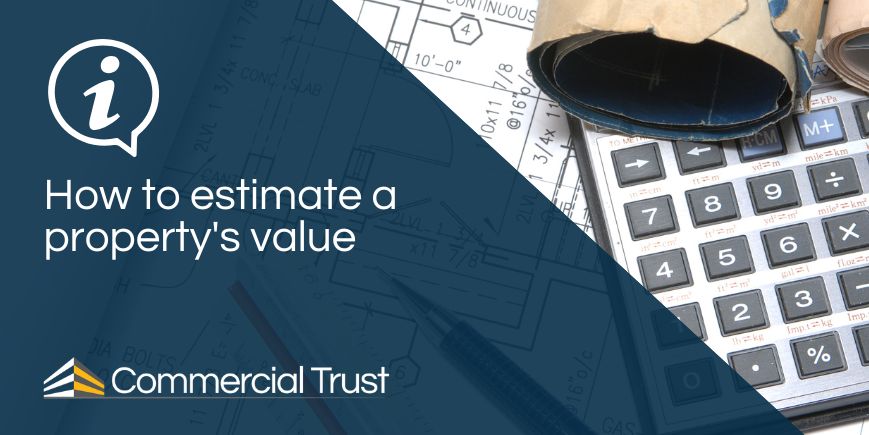This information should not be interpreted as financial, tax or legal advice. Mortgage and loan rates are subject to change.

Categories: guides | guides buy to let mortgage guides | property investment guides | commercial mortgage guides | bridging loan guides
guidesBeing as accurate as possible, with the value of a property you are applying for finance on, is an important step in the process. A lender will send a valuer to get a professional estimate of its value, to protect them from inacccuracy and over exposure.
Avoid over-inflating buy to let property values
As a broker, sometimes, we are unable to help match a client’s case with a lender. One of the more common reasons for this is down-valuations – where the value of the property being mortgaged has been overestimated.
Down-valuations are just as common on remortgages as they are on purchases – which is as true for buy to let property as it is for commercial premises that a business will operate from.
Our advisors will use industry tools to investigate the value of a property, so if they challenge the value you are proposing please do not be offended. We cannot force you to submit a certain value and if you insist on a figure we feel is innaccurate you will risk a down valuation.
Why down-valuations occur?
In many cases, applicants are aiming for a specific deal or LTV (loan-to-value) band. It is reasonable to assume that they would therefore push for as optimistic a valuation as possible.
Lenders’ interests, however, are not always aligned. Their chief concern is to minimise risk, and valuers instructed by lenders are more concerned with limiting their employers’ exposure.
Why are lender valuations often more conservative?
If a lender agreed to lend on a property that had been over-valued, they would be at greater risk of making a loss if they needed to repossess and sell the asset.
This is why lender-instructed valuations tend to be more conservative, and it is this discrepancy that causes down-valuations.
So how is a property value determined?
Property valuation is far from an exact science. Often, sellers and remortgage customers are advised to look at local property values on property portals such as Rightmove or Zoopla. This is because in the first instance, professional valuers are likely to do the very same, as it gives them a good idea of local price trends.
Check local property value trends
This method isn’t bullet-proof, of course. Looking online will only tell you the most recent valuation or sold price of local properties, and won’t take into account any recent improvements that have been made to the property you are assessing.
Individually, properties in a neighbourhood will vary in worth depending on their condition, position on their road, proximity to local conveniences and transport links… the list goes on.
However, looking online still provides an invaluable guide to what your property’s value is likely to be. If your own estimation is severely out of line with local trends, chances are your application with a lender will not be accepted.
This brings us onto the most important piece of advice when estimating your property’s value: be realistic!
Value of renovations to a property
If you are inexperienced in flipping property (renovating property to sell for a profit) be cautious when planning your project.
Don’t plan renovations based on what you would want for your home or business premises. Keep your target market strongly in mind and make renovations that meet their needs and expectations.
Don’t over-invest in a feature or high specification outcome that will not make a profitable return. Do thorough research and get advice from someone with experience.
Tips for estimating your property value
Look at a wide variety of market data. Listing prices don’t tell you much more than the price the seller and their agent want to achieve; sold prices are a much stronger indication of local market forces.
Also look at how long a property has been listed for. If it has sat unsold for months, chances are that it has been over-valued.
Look into other local factors. Anything from local developments and amenities to affluence and crime rates can affect a property’s value. Below is a list of useful resources that could help with this.
Buy to let property valuations
Look at as many recent comparable sales as possible, ideally in the same street as your property (if it is a home for let) and within the last three to six months.
This won’t always be possible, but if it is, it will give you a strong indication of how much your own property might be worth. The figures could also serve as evidence that you may be able to use to challenge a valuer if they down-values your property.
Having found data for recent comparable sales, next consider any factors unique to your property that might make it worth a little more. Have you added one or more extra bedrooms? A conservatory? Have you made energy efficiency alterations? All of these things boost value, but as mentioned, be realistic when determining the amount you think they may have added.
Commercial property valuations
With a commercial property this becomes more complex, as there will be less like-for-like property sales. In this instance you may have to look more widely, or talk to other business property owners in the area. Read our guide on valuing a commercial property.
Resources for estimating property value
- Current valuations: Zoopla
- Asking prices: Rightmove, Zoopla
- Sold prices: Land Registry, Rightmove, Zoopla
- Local market trends: Rightmove
- Price comparison: Rightmove
- Local amenities: StreetCheck
- Local schools: Locrating
- Local transport plans: GOV.UK
- Planning applications: Register of planning decisions
- Crime statistics: Police.UK
- Flood risk: Environment Agency



